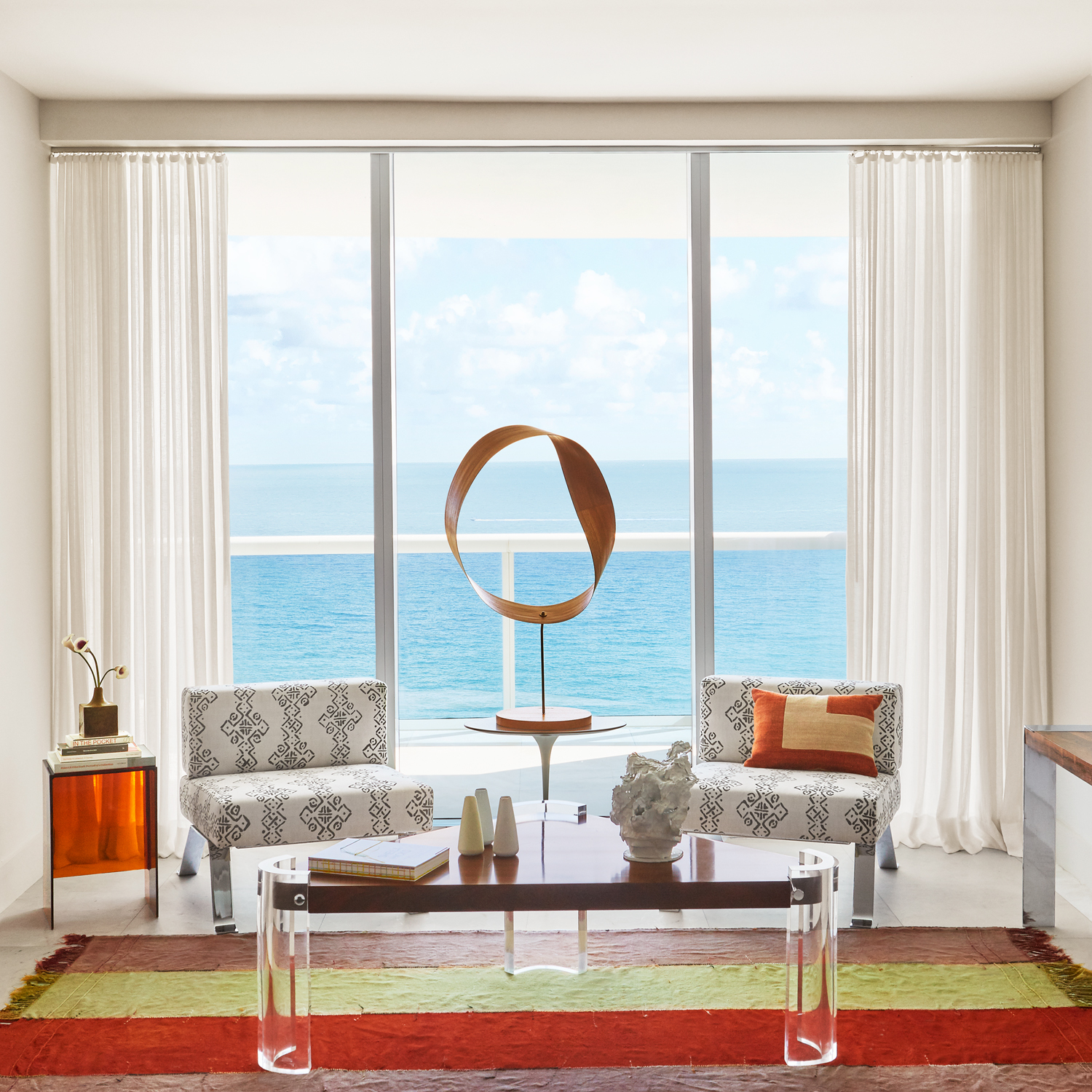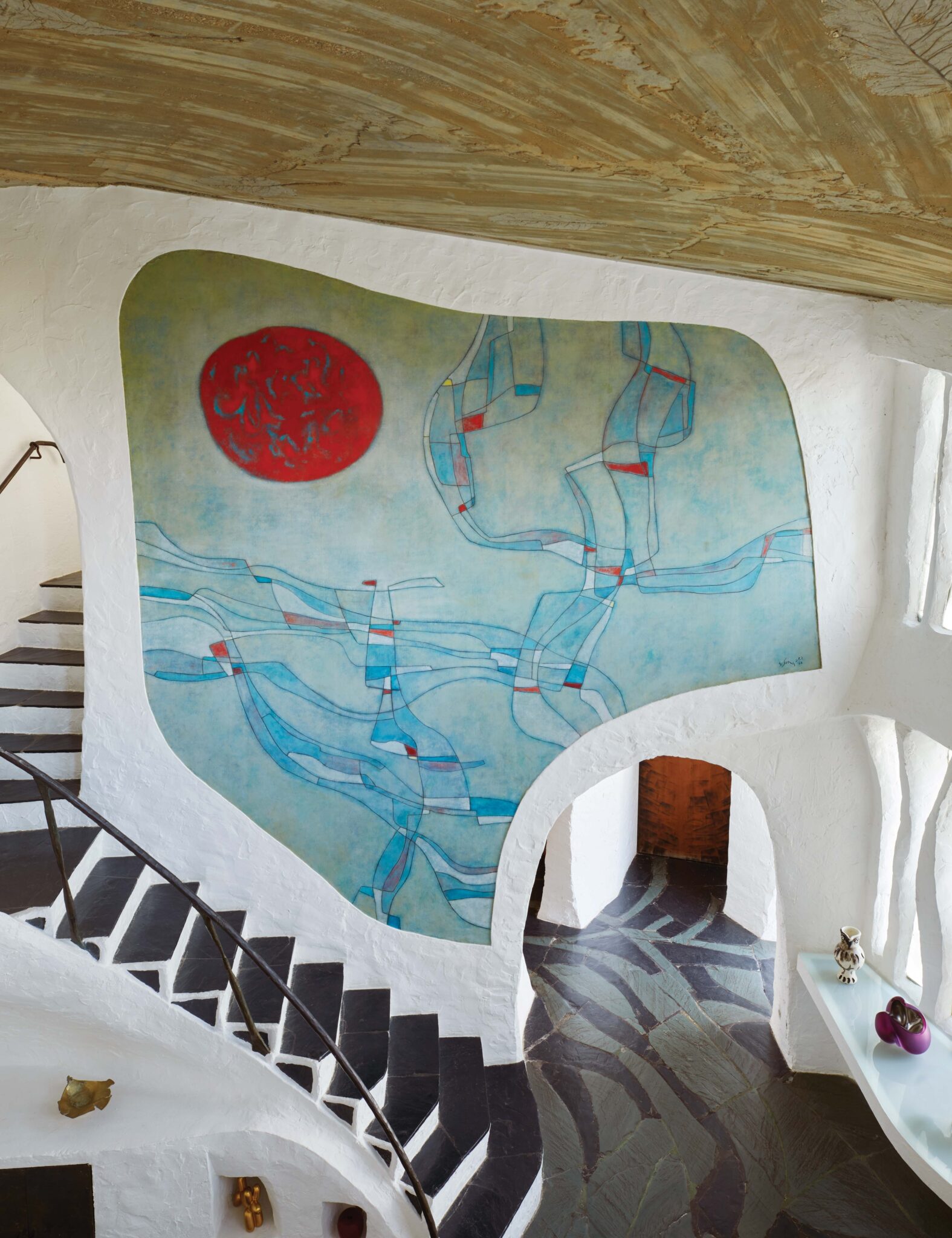Known for her colorful, cultivated and adventurous interiors, designer Sara Bengur has always been interested in how our homes affect our well-being, “how a space can either support us or not support us,” she says. When she experienced her own health crisis in 2002, this interest sharpened. “I was spending a lot of time at home and I realized how lucky I was to have a space that felt so healing and embracing and I wanted to give that to other people.”
In 2003, she helped spearhead an innovative program (in conjunction with FREDERIC editor in chief Dara Caponigro, then style director at Domino magazine) that recruited top designers to design 39 apartments at Woodycrest House in the Bronx, New York, which offered permanent supportive housing, designed with care and comfort in mind, to families whose primary caregiver was living with HIV and AIDS.
Just before the start of another pandemic, COVID-19, Bengur once again immersed herself in helping people experience more peace and well-being at home. Working with a master teacher, she became a certified practitioner of the Vedic science of Vastu. More than 7,000 years old—and some 2,000 years older than Feng Shui, which it spawned—Vastu is “part of the vocabulary for all builders and architects in India,” Bengur says.
Centered on “tuning your space to nature,” Vastu places great importance on the relationship of a space and the objects within it to the cardinal directions of north, south, east and west. “It’s a science that’s quite technical,” Bengur says, citing studies that back up Vastu’s benefits. “I think of it as acupuncture for the home, where we’re trying to get rid of blockages or anything that’s disturbing the space. It’s very subtle work, but the results are profound.”
For one client who was having trouble sleeping but wasn’t interested in a full-on Vastu approach, Bengur relocated a mirror previously hung on a south-facing wall, a placement that, according to Vastu, can disturb sleep. Bengur didn’t tell the client why she had done this, but the client called her to say “I’m not sure what you did, but I’m able to sleep through the night now.”
“I think of it as acupuncture for the home, where we’re trying to get rid of blockages or anything that’s disturbing the space.”
Sara Bengur
The idea that the placement of objects and colors can affect us in non-visual ways is something many of us have experienced firsthand. As Bengur puts it, “sometimes you can walk into a space that’s beautifully designed but you just feel something’s not right. Vastu is about making it feel harmonious, making it support our lifestyles—our work, sleep, and relationships.”
You don’t have to do anything drastic, like break down walls, in order to reap the benefits of Vastu, says Bengur. It’s more about small tweaks. With concern about wellness peaking and many of us spending long hours at home, Bengur isn’t surprised that more people are interested in exploring Vastu’s benefits. “People understand the effect that their environment has on them and their health, and we need to pay attention to that.”
Here, five tips from Bengur on how to bring the power of Vastu into your home.
Sleep in a Southerly Position
For the most restorative sleep, position your bed so that your head is on the south wall (feet facing north), says Bengur. If this isn’t possible, having your head to the west or east is preferable to having it to the north. “There’s a whole hospital study,” Bengur says, “where they put beds in certain positions and the people who had their head to the south or southwest healed quicker than the people who had their heads to the north.”
Orient Your Desk to Support Your Specific Work
According to Vastu, to achieve maximum focus when doing work with numbers or analytical work, you should position your desk so that you face north. To foster maximum creativity, position your desk so that you face east. When the pandemic first hit New York, Bengur set up her home office so that her desk faced south. “This was before I got into Vastu seriously, and I was feeling so distraught. And after I shifted everything around—so that I face north when I do analytical work and east when I do creative work—I feel so much more relaxed and focused.”
Reduce Clutter
The north and northeast sections of the home are thought to be the most healing and supportive and it’s important, says Bengur, to keep them “as open and fluid as possible”, free of heavy furniture or clutter. The center of the home—whether it’s a house or an apartment—should likewise be kept clear. Stacks of books and heavier furniture should be restricted to the south and southwest.
Use Color Appropriately
The role of color in Vastu is complex. Every cardinal direction is correlated with specific colors, the natural elements, and aspects of human life, and color choices in a given area and room can negatively or positively impact “different parts of your body and mind and the energy that surrounds you,” says Bengur. For example, using reds and earth tones in the southern part of a room or house can help activate your life force energy and enliven your career. Using blues and greens in the northern parts of a home can help those experiencing trouble in their relationships or finances.
-

Novelty Wave
backdrophome.com
$45
-

36 Hours in Marrakesh
backdrophome.com
$45
-

Lawn Party
backdrophome.com
$45





















